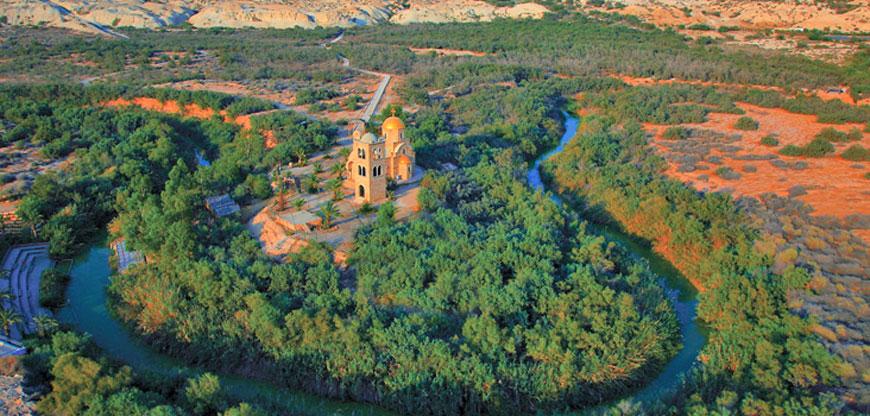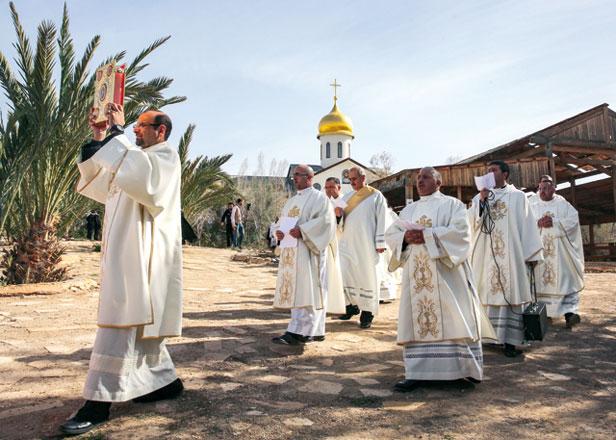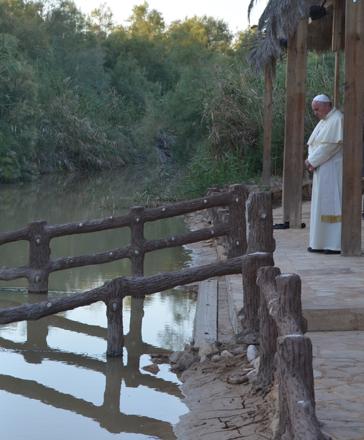You are here
Biblical Jordan
By Nickunj Malik - Dec 21,2016 - Last updated at Dec 21,2016
I have read the Bible more frequently after coming to Jordan, than I ever did before in my life. The religious history that this region possesses is fascinating and closer to Christmas every year, I find myself rediscovering the mysteries of the Biblical land.
The ancient churches in Madaba — including the one with the oldest map of the world in mosaic (with 157 captions of all major sites from Lebanon to Egypt), Mount Nebo — from where Moses saw the Promised Land, (which he would never enter because he died and was buried in Moab), Umm Qais overlooking the Sea of Galilee — where Jesus performed a miracle when he encountered a demented man and cast the bad spirits out of him into a herd of pigs, Lot’s Cave — where he and his daughters apparently lived following the destruction of Sodom and Gomorrah ( after his wife was turned into a pillar of salt for disobeying God’s will) and finally, Bethany beyond the Jordan — where John the Baptist baptised Jesus of Nazareth.
This event altered the spiritual status of the waters of River Jordan because it marked a seminal moment in the life of Christ that sanctified the river’s water. It became an important pilgrimage site for all Christians from fourth century onwards. The Jordan River, from which the Hashemite Kingdom of Jordan derives its name, is mentioned frequently in the Bible, about 180 times in the Old Testament and around 15 times in the New Testament. From its beginning in the northern heights of Mount Hermon to its termination at the Dead Sea (the lowest point on Earth), its elevation drops tremendously — to nearly 725 metres. It is on the banks of this river, on March 20, 2000, that Pope John Paul II held an outdoor mass with 25,000 worshippers.
Today, the river has been reduced to a shallow version of its former self and its waters are muddy and turgid. But the pilgrims, who submerge themselves into it repeatedly, are consumed by religious fervour. It forms a boundary between the neighbouring countries of Jordan and Israel, and at some spots, identical tour parties do exactly similar things, at the same time. You can even hear the people on the other side talking, and can join in the conversation if you feel like.
When I related all this to my Punjabi Christian friend Jasmine in Delhi, she was spellbound for sometime. And then she took a deep breath, clapped her hands and said “Hai!” Let me explain that Jasmine used this exclamation frequently — at the beginning of her sentences to denote decisiveness and in the middle, to emphasise a point. She never uttered it at the end of a sentence but sometimes, when she was rendered speechless; she just expressed it aloud, as a wishful monosyllable.
Her biggest dream was to dunk in the Jordan River as part of a traditional Epiphany baptism ceremony, at the very spot where Jesus got baptised.
“Hai listen, when can I go there?” she asked me.
“Come anytime you want,” I said.
“Hai! Can I take a dip in the river water?” she questioned?
“Of course! Don’t drink it,” I cautioned.
“Why but why?” she queried.
“Because it’s probably polluted,” I answered.
“It is holy water, Hai! It will purify me,” she insisted.
“Come to Jordan for Christmas,” I said.
There was a pause as she searched for the right reply.
“Just do it,” I persisted.
“Hai!” she exclaimed wistfully
Related Articles
AMMAN — Despite its international recognition, the Baptism Site on the eastern side of the Jordan River receives “way fewer” visitors than t
WADI AL KHARRAR — Hundreds of Catholic worshippers attended a special mass on Friday on the banks of the Jordan River in an annual pilgrimag
AMMAN — Adding Jordan’s Baptism Site to UNESCO’s World Heritage List debunks Israeli claims that the site is on the western side of the Jord



















